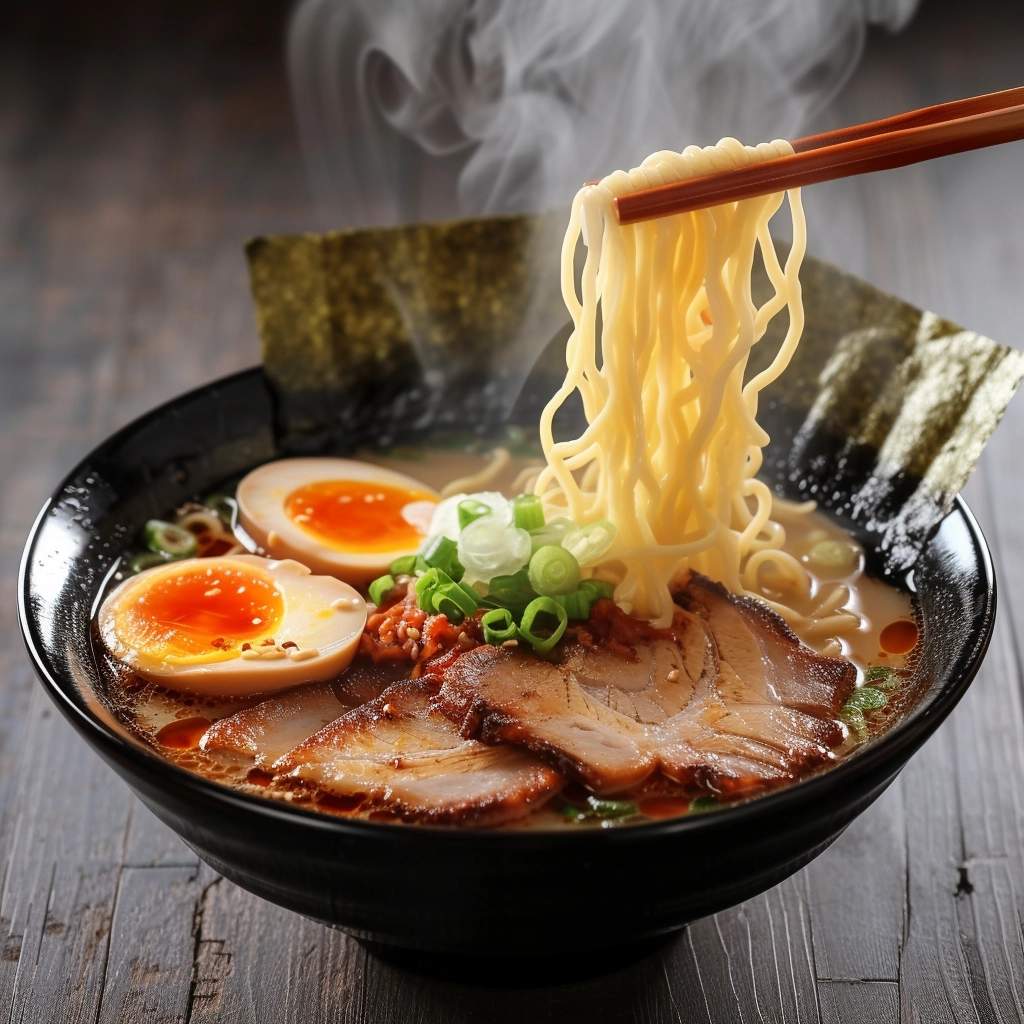Ramen, a traditional Japanese meal, has today become everyone’s favorite. A hot bowl of noodles simmered in broth and garnished with meats and vegetables; it is more than just a meal – it is culture. The roots of this dish can be traced back to early 20th century Japan when it was brought into the country from China as a Chinese noodle soup. However, its subsequent development and exponential popularization in Japan and beyond make it a unique phenomenon.
I explore the culture of ramen in this article – both in Japan and internationally as a widely popular consumer good. I rediscover a national symbol, local treasure, and international staple all packed into one bowl.

History of The Ramen in Japan
Ramen’s history in Japan dates back to the early 20 th century. Ramen was first introduced as Chinese noodle soup, which was known as “Shina Soba” translated as Chinese soba. It was first introduced into Japan by Chinese immigrants in Yokohama’s Chinatown. The small restaurants would sell “Chuka Soba” to locals. Ramen was later converted to “ramen” and sold in noodle shops. After World War II, ramen became more popular in Japan due to food shortages. Its filling nature and affordability made it popular among working-class people and the poor.
Momofuku Ando’s invention of Instant Ramen in the 1950s made it a mainstream food item. Ramen has developed into various regional dishes throughout Japan. The once simple Chinese noodle soup from Yokohama Chinatown has developed into gourmet cuisine with many regional characteristics. Miso flavour from Sapporo, salt broth from Hakodate, and cloudy Tonkotsu goltogel ramen from Hakata are just a few examples. Ramen has evolved from a foreign dish to one of Japan’s most well-known and beloved meals in a brief period.
Regional Variations of Ramen
The chameleon-like adaptability of ramen has led to the development of countless regional styles that reflect local tastes and produce. In the following three styles from Hokkaido, Tokyo, and Kyushu, we touch upon each of those aspects. In the prefecture of Hokkaido, Sapporo, the capital city, boasts rich and hearty miso ramen flavored with miso-based broth. The ingredients, which may include thick and curly noodles and toppings such as corn, butter, and pork, manifestly express Hokkaido’s cold climate and strong agricultural presence.
The ramen street of Tokyo, Japan’s cultural and economic center, is composed primarily of soy-based ramen, called shōyu ramen. Its clear, brown-colored soup that gets its flavor from soy sauce complements ingredients such as chāshū , a kind of braised pork belly, menma , a putrid bamboo shoot, and nori , seaweed, makes for a smooth and sophisticated taste. In Kyushu’s northernmost city, Fukuoka, the Hakata district boasts tonkotsu ramen with a delicious, creamy pork bone broth.
The ramen, with thin and straight noodles, consists of slices of chāshū and sets of sliced spring onions. The elaborate and scorching process results in a deliciously springy and sulky broth that reveals the dedication and artisanship that Kyushu is renowned for. These three regional ramen types highlight the local components while also reflecting the regional food principles. From the north’s assertive flavors to the metropolitan cool of Tokyo and Kyushu’s dedication, Japan’s ramen profile is a mix of numerous fascinating tastes.
Cultural Significance of The Ramen
In Japan, ramen isn’t just a meal; it is rooted deeply in Japanese culture as well. Its presence in the media, in books, and movies is enough to show how much it is adored in the country. In fact, one example is Naruto, a popular manga series that features a protagonist who is crazy for ramen. Even other films like Tampopo, which incorporates the search for the most perfect ramen recipe, further highlight the love of ramen by the Japanese people. The quest of making ramen is a clear indication of how Japanese people strive for perfection known as kaizen.
Just like how many hours are spent on developing the best broths, the best toppings, and noodles, many Japanese crafts such as origami or carpentry require utmost perfection, because it is a reflection of Japanese culture. In addition, the culture of eating ramen and the laxity that comes with it is another showing of Japanese culture. When slupring ramen, people tend to be loud, a sign of enjoying one’s meal. It is one of the ways that Japanese culture is meant to unify people.
Moreover, the open culture in ramen eating places where customers sit close to each other and share tables reflects the harima no eating tradition. Therefore, ramen has a number of cultural implications, from being a good meal to a social enabler. Therefore, it reflects the Japans and all its elements as well.

Ramen’s Global Reach
Ramen has surpassed Japan’s borders to command the palates of countries away and the thoughts of countless cooks having inspired myriad of adaptations. Japan’s version of the ramen has taken the rest of the world by storm resulting in specific ramen restaurants in many capitals in different continents. The United States, Australia, and European countries have incorporated the noodle soup in the respective dishes utilizing locally available ingredients and respective cooking methods.
he dispersion of ramen is driven by the ramen craze that has resulted in the international creation of ramen festivals. The Tokyo Ramen Show and New York Ramen Contest are some of the events that bring ramen chefs, lovers, and foodies together. These and other foods serve to experience to the world the nature and diversity of ramen and new combinations. Ramen has also benefited from the global distinguishing traits that include food and online knowhow. The growth of foodie civilization led by social media has made food one of the best performers.
Sharing pictures of meals on Instagram and videos on YouTube has made multiple people seek more knowledge and experiences that they rely on authentic chefs to offer. Ramen continues to evolve and take on new cultures making it a global meal.
The Future of Ramen
Although ramen has gained its worldwide reputation, this success will only promote further developments and new trends in this field. New types of ramen may appear both in Japan and in other countries reflecting the tastes of modern people and novel approaches to nutrition. For example, there is a possibility that ramen can be used as a healthy supplement for a diet with low-salt broths, whole grain noodles and protein obtained from plants. Foreign ramen recipes may acquire great popularity and become an independent subspecies.
It is clear that, while remaining a large format, ramen will vary depending on the country, the consumer, and the current culinary trend. In the global industry, new opportunities for chefs of this specialization will be opened, for example, innovations in cooking using sous vide and molecular gastronomy to surprise and delight guests with the taste and quality of the finished dish.
The world-wide social obsession with food and media will also influence the ramen movement. The more enthusiasts share photos of ramen and their own experiences, the greater the demand for beautiful and tasty ramen will be. Overall, the future of ramen is as unique and diverse as ramen itself. New types, recipes and forms of ramen await us in the future, but it is clear that this dish will be as popular with people as it is now.

Conclusion
In conclusion, ramen’s cultural importance and global influence remind us that the culinary landscape is ever-evolving, yet deeply rooted in tradition. As we slurp our way through bowls of steaming noodles and savory broth, we partake in a shared experience that unites us across cultures and generations. Through ramen, we taste not only a beloved dish but also a profound sense of connection and culinary camaraderie.
If you’ve enjoyed delving into the rich tapestry of ramen culture and its global influence, we invite you to continue exploring the diverse wonders our world has to offer. Journey with us to Gunung Ebulobo, where the majestic landscapes and vibrant culture of Indonesia await your discovery.




